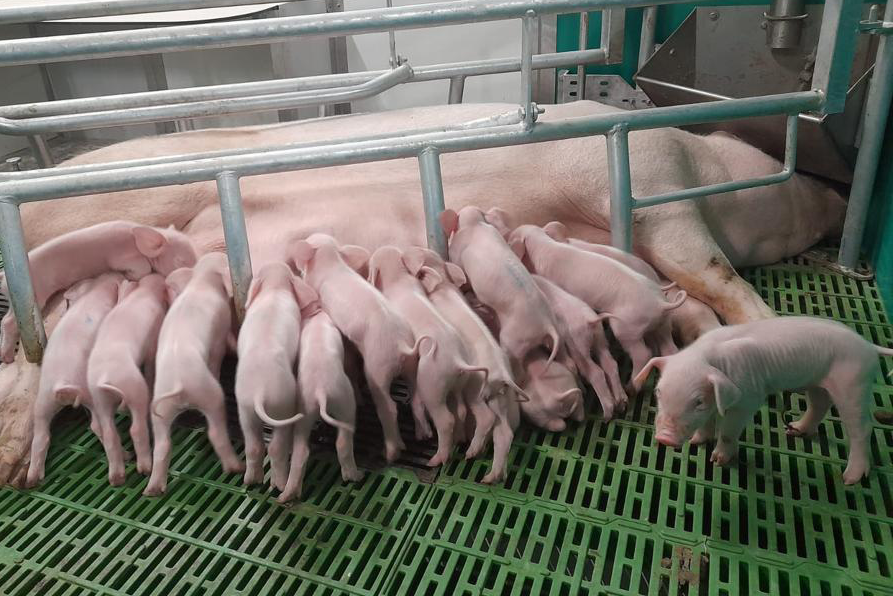David and Cyril Jaglin use PIC genetics and the new-generation Camborough® sow. The number of piglets weaned has increased. The farmers appreciate this calm and robust female.

SCEA de Goasmario:
2 partners (David and Cyril)
2 employees
300 sows farrow-to-finish
340 ha
20 Charolais suckler cows
“The new gilts are capable of weaning more piglets. The pigs are very uniform,” observes Cyril Jaglin, who runs the farm with his brother David in Saint-Gilles-Vieux-Marché (Côtes-d’Armor).
The farm has used PIC-developed genetics for decades—their parents were multipliers in the 1980s. Recently, they adopted the new-generation Camborough® sows, “which increased the number of weaned piglets from 12 to 14, even 15 to 16 for gilts.” Weaning takes place at four weeks, with an average weight of 7.5 kg per piglet. The breeders are among the first in France to benefit from this genetic progress: “PIC has just launched new multiplication sites in France to increase availability of these gilts by 2026,” explains Benoît Cail, genetic advisor for the company, who reports high productivity levels, “above 35 piglets per sow per year.” These results are supported by insemination success rates—first-service fertility is at 97%. “This sow is prolific,” he notes. Cyril confirms: “We haven’t had any returns.”
Selection criteria for the new Camborough® focus more than 50% on the robustness of the sow and her piglets (birth weight, pre-weaning losses under 8%, etc.). Other traits include sow self-sufficiency, growth rate, feed conversion ratio, and carcass quality. The farm’s sows are inseminated with PIC410 boars, which are also “very robust.”
Genetics serving the climate
In terms of animal handling, David and Cyril Jaglin appreciate this sow’s temperament: “very pleasant, calm, doesn’t move during treatment—very well suited for loose-housing farrowing systems.” They’ve also observed a shift in live births: “Very few piglets are born under 900 grams, and all weaned piglets are sold,” with a post-weaning mortality rate of just 2.5%. “Lactation goes well—these sows can wean good-quality piglets, with evenly spaced teats. Feed intake is slightly higher during lactation, but the results speak for themselves. This sow is also strong on health—we can raise pigs without antibiotics.”
The farm’s overall feed conversion ratio is 2.56, and the standardised finishing age at 115 kg is 163 days.
This performance, both in productivity and technical results, “reduces the carbon footprint—greenhouse gas emissions are down 7.7% with PIC genetics compared to the European average,” says Benoît Cail. In western France, average emissions are around 2.23 kg CO₂ equivalent per kilogram of live weight at farm exit.
Author : Franch Paranthoën
The original article was published in the specialist journal Paysan Breton, No. 3601, on 20 March 2025.




